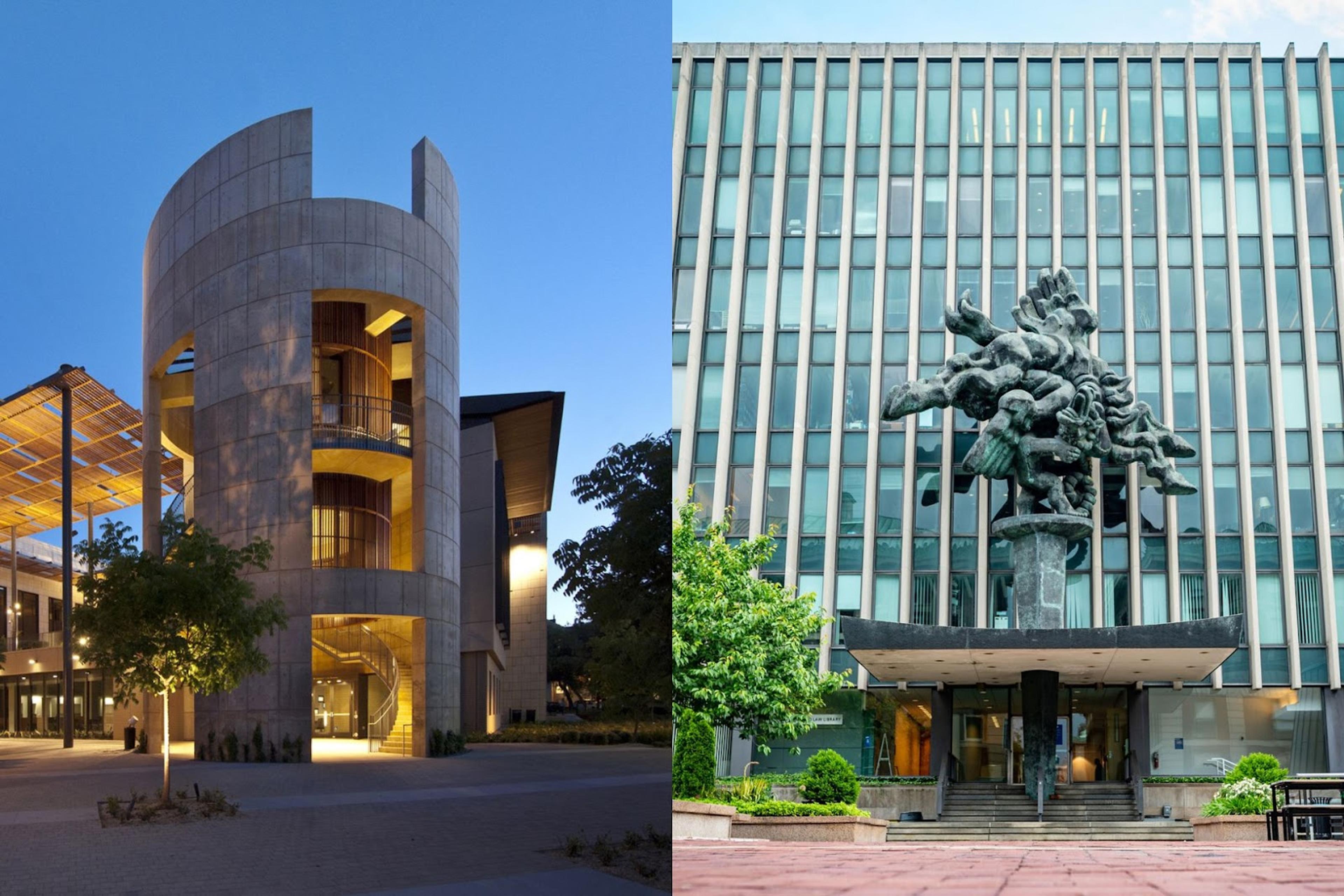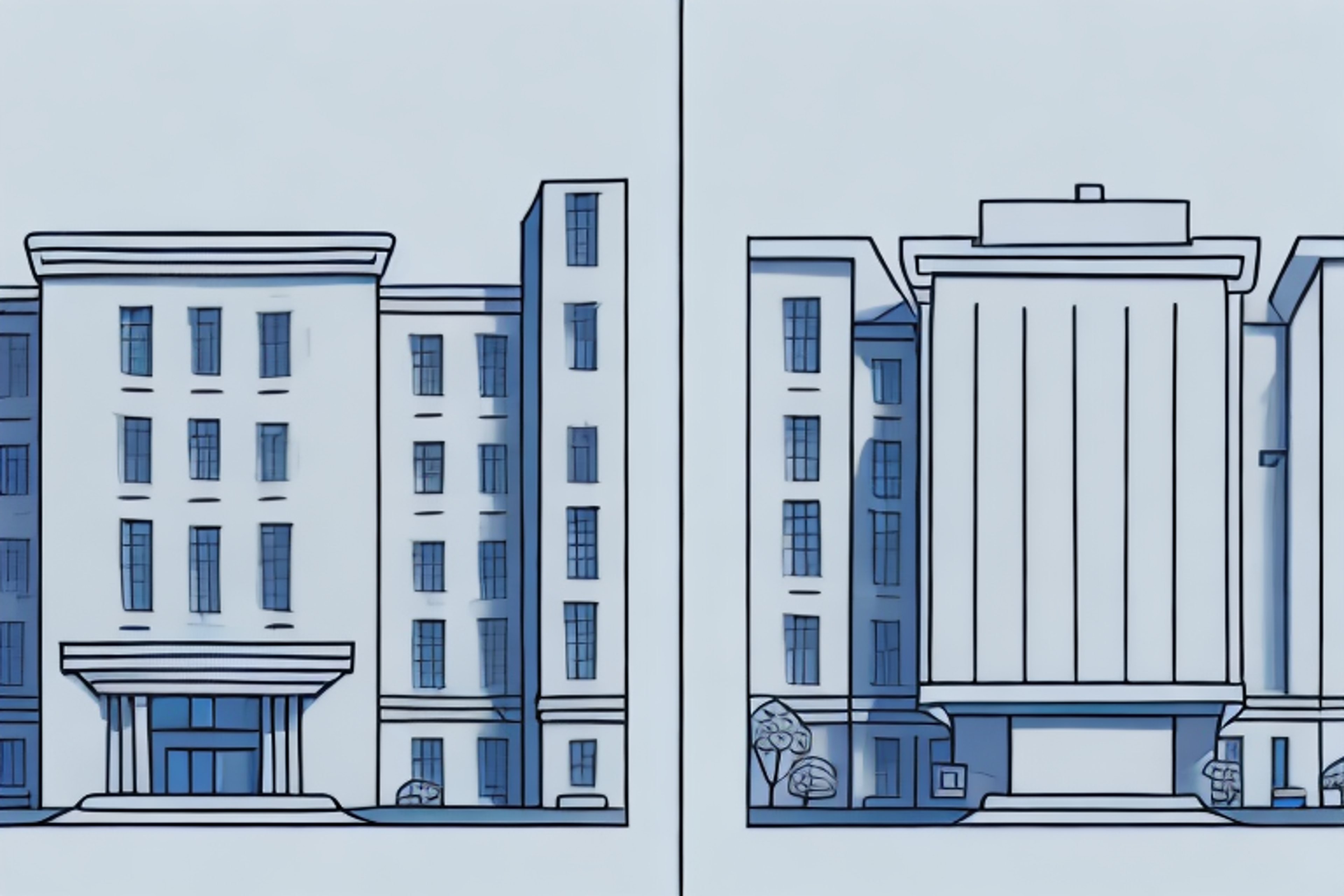Columbia Law School Vs. University of Michigan--Ann Arbor Law School: An In-Depth Comparison
Are you considering attending law school but unsure which one to choose? Our article provides an in-depth comparison of Columbia Law School and University of Michigan--Ann Arbor Law School, highlighting their differences in curriculum, location, and reputation.
Posted June 13, 2025

Table of Contents
Law school is a big investment and a significant chunk of one's life, which is why it is essential to choose the right one. In this article, we will compare two of the most renowned law schools in the United States: Columbia Law School and the University of Michigan-Ann Arbor Law School.
Introduction: Why compare Columbia Law School and University of Michigan--Ann Arbor Law School?
Both Columbia Law School and the University of Michigan--Ann Arbor Law School are highly respected law schools. They have a reputation for academic excellence, faculty expertise, and impressive alumni. However, choosing between these two institutions can be a daunting task. In this article, we will break down the essential factors you need to consider before making a decision.
One important factor to consider when comparing Columbia Law School and the University of Michigan--Ann Arbor Law School is their location. Columbia Law School is located in New York City, which is known for its bustling legal scene and proximity to major law firms and courts. On the other hand, the University of Michigan--Ann Arbor Law School is located in Ann Arbor, Michigan, which offers a more relaxed and suburban environment. Depending on your career goals and personal preferences, the location of the law school may play a significant role in your decision-making process.
Location and Campus: How do the physical environments of these law schools differ?
The first difference between the two law schools is their location. Columbia Law School is located in New York City, one of the world's most vibrant and bustling cities. In contrast, the University of Michigan--Ann Arbor Law School is located in a mid-sized college town.
The Columbia Law School campus has a historical feel to it, with several of its buildings being built in the early 1900s. The University of Michigan--Ann Arbor Law School is newer and has a modern design. It has state-of-the-art facilities, including moot courtrooms and a law library.
Another notable difference between the two law schools is the size of their campuses. Columbia Law School is situated in the heart of New York City, which limits the amount of space available for the campus. As a result, the campus is relatively small and compact. In contrast, the University of Michigan--Ann Arbor Law School has a much larger campus, with plenty of green spaces and outdoor areas for students to enjoy. This allows for a more relaxed and spacious environment, which can be beneficial for students who prefer a quieter and more peaceful setting.
History and Reputation: What are the historical backgrounds and reputations of these schools?
Columbia Law School was established in 1858 and is one of the oldest law schools in the country. It has a long history of producing great legal minds, including US Supreme Court justices, politicians, and academics. The University of Michigan--Ann Arbor Law School was established in 1859 and has been at the forefront of legal scholarship and research. It has a reputation for being a public Ivy League institution, offering Ivy League quality education at an affordable price.
In addition to their historical backgrounds and reputations, both Columbia Law School and the University of Michigan--Ann Arbor Law School have strong alumni networks. Columbia Law School has produced numerous influential figures in the legal and political spheres, including former US President Barack Obama and Supreme Court Justice Ruth Bader Ginsburg. The University of Michigan--Ann Arbor Law School has also produced notable alumni, such as former US Secretary of State Hillary Clinton and former Michigan Governor Jennifer Granholm.
Academic Programs: How do the academic programs at these law schools compare?
Columbia Law School provides a robust curriculum that includes traditional courses like torts, contracts, and property law, as well as more specialized courses in areas such as intellectual property law and international law. The University of Michigan--Ann Arbor Law School also offers a diverse range of courses, including business law, environmental law, and criminal law.
Both law schools have a strong commitment to experiential learning, offering legal clinics, moot court competitions, and externship programs. Columbia Law School provides students with opportunities to work in New York City's legal market, while the University of Michigan--Ann Arbor Law School offers internships in Washington D.C. and other cities worldwide.
In addition to their academic programs, Columbia Law School and the University of Michigan--Ann Arbor Law School also have unique features that set them apart. Columbia Law School has a renowned faculty that includes legal scholars and practitioners, as well as a strong emphasis on public interest law. The University of Michigan--Ann Arbor Law School, on the other hand, has a strong focus on interdisciplinary studies, with opportunities for students to take courses in other departments and schools within the university.
Furthermore, both law schools have active student organizations that provide opportunities for networking, community service, and professional development. Columbia Law School has over 100 student organizations, including the Columbia Business Law Association and the Columbia Human Rights Law Review. The University of Michigan--Ann Arbor Law School has over 60 student organizations, including the Environmental Law Society and the Women Law Students Association.
Faculty and Staff: Who are the professors, lecturers, and staff members at these law schools?
Columbia Law School has a faculty comprised of some of the most highly respected legal scholars in the country. The University of Michigan--Ann Arbor Law School also boasts a faculty of accomplished scholars and experts in their respective fields.
Both institutions have a student-to-faculty ratio of approximately 7:1, which means that students can expect to receive personalized attention from their professors.
In addition to their esteemed faculty, both Columbia Law School and the University of Michigan--Ann Arbor Law School have dedicated staff members who provide support and resources to students. These staff members include career services advisors, librarians, and administrative personnel who work tirelessly to ensure that students have access to the tools they need to succeed in their legal education.
Student Body: What is the student population like at Columbia Law School and University of Michigan--Ann Arbor Law School?
The student body at Columbia Law School is diverse, with students from all over the world and a nearly equal gender split. The University of Michigan--Ann Arbor Law School also has a diverse student body, with a student population that represents all 50 states and over 40 countries.
Both schools also have a strong commitment to promoting diversity and inclusion. Columbia Law School has a number of student organizations dedicated to promoting diversity and social justice, such as the Black Law Students Association and the Latinx Law Students Association. Similarly, the University of Michigan--Ann Arbor Law School has a Diversity, Equity, and Inclusion Committee that works to create a welcoming and inclusive environment for all students.
Admissions Criteria: What are the admission requirements for these law schools, and how do they differ?
The admissions criteria for Columbia Law School and the University of Michigan--Ann Arbor Law School vary slightly. Both institutions require applicants to submit their undergraduate transcripts, LSAT scores, and letters of recommendation. However, the median LSAT score and GPA of admitted students differ slightly for each institution, with Columbia Law School having a higher median LSAT score and GPA than the University of Michigan--Ann Arbor Law School.
In addition to the basic admission requirements, Columbia Law School also requires applicants to submit a personal statement and a resume. The personal statement should be no more than two pages and should explain why the applicant wants to attend law school and what they hope to achieve with their law degree. The resume should highlight the applicant's academic and professional achievements.
On the other hand, the University of Michigan--Ann Arbor Law School requires applicants to complete a character and fitness questionnaire. This questionnaire asks applicants to disclose any past criminal convictions, disciplinary actions, or other issues that may affect their ability to practice law. The purpose of this questionnaire is to ensure that all admitted students are fit to practice law and meet the ethical standards of the legal profession.
Tuition and Financial Aid: How much does it cost to attend Columbia Law School vs. University of Michigan--Ann Arbor Law School, and what financial aid options are available?
The cost of attendance for Columbia Law School and the University of Michigan--Ann Arbor Law School differs significantly. Columbia Law School's annual tuition is over $70,000, while the University of Michigan--Ann Arbor Law School's annual tuition is under $50,000.
Both institutions provide financial aid options, including scholarships, grants, and loans. The University of Michigan--Ann Arbor Law School, in particular, has one of the most generous financial aid programs in the country.
Career Prospects: What kind of jobs can graduates from these law schools expect to get, and how do their career paths compare?
Graduates from both law schools have a high likelihood of securing high-paying jobs in prestigious law firms, government agencies, or other legal organizations. However, Columbia Law School graduates tend to specialize in high-income law fields such as corporate law and finance, while University of Michigan--Ann Arbor Law School graduates are more diverse in their career paths, working in fields such as public interest, government, and academia.
Extracurricular Activities: What kind of extracurricular activities are available at these law schools, and how do they differ?
Both Columbia Law School and the University of Michigan--Ann Arbor Law School have a wide range of extracurricular activities, including law journals, moot court competitions, and pro bono clinics. Columbia Law School also has a unique moot court competition called the Harlan Fiske Stone Moot Court Competition, which is one of the most prestigious moot court competitions in the country.
Alumni Network: How influential is the alumni network from Columbia Law School vs. University of Michigan--Ann Arbor Law School?
Both law schools have an impressive alumni network, comprising famous legal minds, public figures, and business leaders. Columbia Law School's alumni network is particularly strong in the New York City area but also has a global reach. The University of Michigan--Ann Arbor Law School's alumni network is also robust, with several influential alumni working in politics, public service, and other notable fields.
Conclusion: Which law school is better for you?
Choosing between these two law schools ultimately depends on your individual needs and goals. If you want to specialize in a high-income law field and gain access to New York City's legal market, Columbia Law School may be the right choice. If you want a diverse range of career options and one of the most affordable legal educations in the Ivy League, the University of Michigan--Ann Arbor Law School may be the right fit.
Regardless of your choice, both law schools will provide you with an excellent legal education and opportunities to launch a fulfilling legal career.











